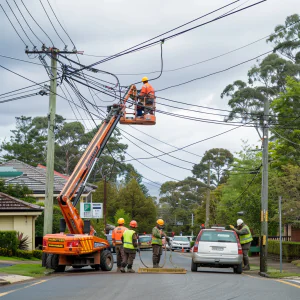In life, almost all living things desire efficiency.
Trees lose their leaves and bears hibernate in winter to conserve energy. Hunting animals stay camouflaged to stalk their prey, ants have well-defined roles to create efficiencies according to size and strength, and people build vehicles and roads to get places they need to.
Oddly, many of us get frustrated when we miss the traffic lights, even when we are running early to an appointment. This is all due to our innate desire and drive for efficiency and we all know how amazing it feels when we accomplish something as efficiently as possible.
It is truly understandable why people in heavy industry (construction, mining, infrastructure, etc…) are infuriated by the current processes which are meant to keep them safe.
Safety is too Sticky!!
What Do I Mean By Sticky?
Sticky means there are far too many efficiency losses, in the name of safety, which do not add the value they are supposed to. An enormous proportion of these inefficiencies come from compliance of which almost all of them are self-imposed by the company. Sticky also means you lose the ability to adapt according to your work environment because you are stuck in your ways.
Stickiness comes from constantly looking at what goes wrong and trying to fix it. Every incident that occurs has to have an action, and often that action will create further stickiness across a business without ever being able to replicate that exact scenario.
So… How Do You Remove Stickiness?
Firstly, focus on what goes right, capture it and try and replicate it, as opposed to constantly trying to fix only what goes wrong.
Secondly, any action you put in place has to add greater value than how sticky it is…
Example: A worker injures their hand. The result from an investigation concludes that the worker wasn’t wearing gloves and the injury wouldn’t have been as severe if they were wearing gloves. The action is that everyone on-site needs to wear gloves.
What does this achieve?
Distrust – that the company does not believe the workers can do their job without hurting their hands (it might be more difficult for the workers to wear gloves on every task). The expense of gloves for every worker. All these create stickiness.
Thirdly, capture the conversation; not the documentation.
Writing is sticky, especially in heavy industry. Workers hate writing long (or short) risk assessments, pre-starts, and other paperwork. If the goal is to establish a methodology, risks and controls then why wouldn’t you talk about it and capture that? This removes the stickiest part of safety management on a worksite and may help facilitate knowledge transfer between employees.
Conclusion
If we want the best for our workers (and our companies) we need to remove the stickiness in our everyday work. Capture the conversation, focus and replicate on what we are doing right, ensure we only add value in our decisions and be efficient as we all strive to be.






